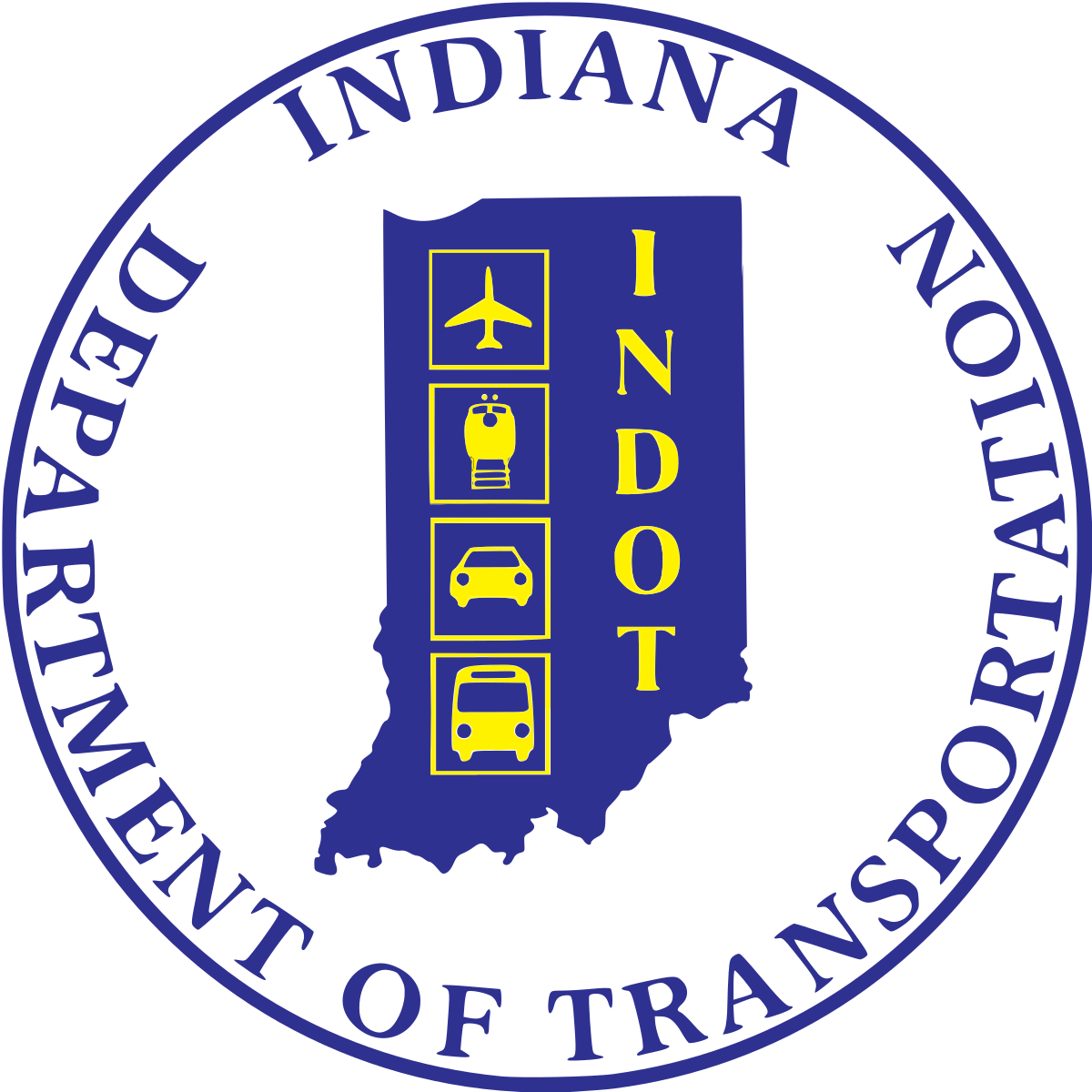Research Projects
I have led and contributed to multiple interdisciplinary projects funded by agencies such as the National Science Foundation (NSF), Indiana Department of Transportation (INDOT), and the U.S. Department of Transportation (USDOT). This section highlights a selection of those projects.



----- Project Summary -----
- Digital Twin:
- Human Factor / Physiology Sensing:
- Safety:
- User Experience (UX):
------------------------------
Work Zone Digital Twin for Detecting Worker Violating Geofence
Digital Twin Wearable Sensing Safety Unity C#
Problem
- Work zone intrusions have been a safety-critical issue in transportation and construction
- Besides vehicle-related factors, worker violating geofence must be considered a contributing factor of work zone intrusions
- Developed a work zone digital twin that aggregates data from channelizing devices, beacon, and GPS receivers
- Conducted real-time detection of workers violating work zone geofence area
- This solution was validated through a pilot test in a simulated road work zone
- The system achieved a detection accuracy of 50 ± 11 cm
- The system achieved a detection latency of 0.15 ± 0.01 s
- Enable an identification of workers' risk-taking behaviors on work zones
- The digital twin building a foundation to combine vehicle-related monitoring and activate proactive alerts for workers and drivers to improve safety
Human Digital Twin for Human-centered-AI Interaction
Digital Twin Wearable Sensing Human-centered ML/DL Unity C#
Problem
- The integration of new technologies into workplaces can introduce challenges for employees, particularly regarding safety and wellbeing
- These challenges underscore the need for real-time monitoring of human states and responsive feedback mechanisms to enhance workplace safety and wellbeing
- Proposed a human digital twin framework and developed its prototype that integrates bi-directional communication between the physical human and a virtual counterpart to capture human physiological states and deliver adaptive alerts during interaction with drones
- Monitored human situational awareness of approaching drones using eye-tracking and delivered multimodal alerts when unawareness were detected
- Predicted changes in human stress trajectories using deep learning models and coordinated drone behavior to maintain distance when elevated stress was anticipated
- The human digital twin system increased the proportion of individuals who were aware of the drone’s approach from 19% to 68%
- The framework lay the foundation for real-time analysis of human multi-dimensional states and timely feedback provided to improve their safety and wellbeing in any high-risk environments
Work Zone Intrusion Risk Assessment through LLMs and DLs
Risk Assessment LLMs Safety TensorFlow Python
Problem
- Work zone intrusions have been recognized as a multi-dimensional and complicated issue
- There remains a lack of risk assessment regarding the cause of work zone intrusions due to limited available database
- Retrieved the crash reports on Automated Reporting Information Exchange System (ARIES) database by polices, including tabular (e.g., roads, weather, etc.), resultant (e.g., injuries and fatalities), and narrative (e.g., interview with drivers) data
- Conducted work zone intrusion risk assessment by combining likelihood assessment using LLMs and severity assessment using DLs
- A likelihood assessment was conducted using GPT-4o to identify features in the tabular data that most frequently aligned with drivers’ self-reported causes
- A severity assessment was conducted by discerning key features in the tabular data that held greater importance in the developed DL model, which classified incidents as either high severity (involving injuries or fatalities) or low severity (non-injury, non-fatality cases)
- Aggressive driving, lane changes, and slippery surface conditions were reported by the drivers as top 3 contributing factors associated with a higher likelihood of work zone intrusions
- Vehicles being towed, hitting and running away, and one-way-one-lane road exhibited top 3 importance to the severity of work zone intrusions
- Help stakeholders better assess the risk of work zone conditions related to vehicle intrusions based on historical reports
- Support proactive implementation of preventive strategies at critical moments to mitigate the risk of work zone intrusions
Physiology-Based Modeling and Prediction of Human-Autonomy Trust
Human Factor Physiology Sensing Human-Autonomy Interaction Deep Learning VR/AR/XR Unity C# Python TensorFlow
Problem
- Industries are changing via technological integration, raising a concern regarding whether workforce are ready for interacitng with technologies
- While trust has been recognized as an essential element directly affecting users' acceptance of new technologies, there is a lack of knowledge of how workers build trust in autonomous technologies within construction
- Designed and developed a VR-based human-autonomy interactive bricklaying experiment in Unity, with participation from 105 recruited individuals
- Deployed physiology sensing (i.e., brain activation, eye-tracking, electrodermal activity, and heart rate) to capture participants' naturalistic responses during interaction
- Conducted statistical analyses (i.e., t-test, ANOVA, and correlation) using Python to understand the impact of failure identifaction, risk perception, and brain activation on human trust
- Developed a CNN-LSTM hybrid model using TensorFlow, trained with multi-dimensional physiological data, to predict human trust dynamics (i.e., increasing or decreasing) during human-autonomy teaming
- The results support that trust dynamically fluctuated in response to the number of failures identified and the risk perception score, as reflected by prefrontal cortex activation
- The developed hybrid model achieved an accuracy of 71.9%, precision of 74.4%, recall of 75.8%, and F1-score of 75.1% in predicting the trajectory of human trust change
- Conclude that individuals who fail to identify system failures or misjudge risks tend to overtrust autonomous systems and misuse them.
- Demonstrate the effectiveness of using prefrontal cortex activation as an objective measure of human trust in autonomous systems.
- Enable the development of trust-aware autonomous systems that can adapt to workers’ cognitive states in real time, enhancing safety, efficiency, and technology acceptance in industrial environments.
User-Centered Dashboard for Selecting Asphalt Release Agents and Cleaners
User Experience Qualitative Analyses Visualization Excel VBA
Problem
- Field personnel and contractors face challenges in selecting suitable Asphalt Release Agents (ARAs) and Asphalt Cleaners (ACs) due to limited comparative information and diverse site-specific requirements.
- The lack of a structured, user-friendly platform for evaluating product performance.
- Conducted semi-structured interviews and user questionnaires to capture practical needs, preferences, and feedback from field personnel and decision-makers.
- Developed an interactive dashboard that enables side-by-side comparison of ARAs and ACs based on product properties, cost, safety, and application criteria.
- The dashboard successfully streamlined decision-making by allowing users to compare ARA and AC options based on their specific project needs and constraints.
- Feedback from industry professionals confirmed the usefulness, clarity, and applicability of the platform in real-world maintenance and operations.
- Provided a user-friendly digital tool that enhances efficiency, safety, and informed product use in asphalt operations.
- Supported data-driven and experience-informed decisions that can enhance product selection accuracy and promote safer field practices.
Intrusion Prevention Technologies Usability Analysis through Driving Experiments
User Experience Experimentation Physiological Sensing Excel VBA
Problem
- There is a lack of empirical evaluation of commercially available intrusion prevention technologies from a driver-centered perspective.
- Conducted driving experiments to quantitatively assess 12 drivers’ cognitive responses to intrusion prevention technologies (SonoBlaster, WAS, AWARE, and Intellicone) and qualitatively evaluate perceived usability through post-drive interviews.
- Evaluated technology effectiveness using multiple human-centered metrics, including attention (iMotions eye-tracking glasses), brain activation (fNIRS), stress levels (Empatica), reaction time, and stoppage distance.
- Developed an interactive dashboard that integrates drivers’ quantitative and qualitative feedback to support future decision-making based on user-centered considerations.
- Among the four technologies, WAS and Intellicone demonstrated stronger driver responsiveness and shorter average reaction times.
- Drivers rated Intellicone as the most usable and least stressful system, while eye-tracking and fNIRS data supported higher situational awareness under WAS deployment.
- Provided DOTs with driver-centered insights to guide selection and deployment of work zone intrusion prevention technologies.
- Delivered a customizable decision-support tool that enables contractors and safety managers to compare technologies based on cost, effectiveness, and human factors.
